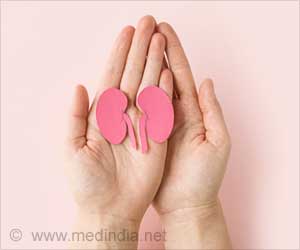MINOCA is detected by irregularities in blood enzymes that indicate cardiac muscle injury
- MINOCA is abbreviated as "myocardial infarction with non-obstructive coronary arteries"
- It is caused as a result of inadequate blood supply to the heart
- Shortness of breath, nausea, lightheadedness, chest discomfort, chest pain, pressure, and tightness are all symptoms of MINOCA
Wei is the associate medical director of Cedars-Sinai's Imaging Research Institute and the co-director of the Smidt Heart Institute's Stress Echocardiography Lab. Bailey Merz is the director of the Smidt Heart Institute's Barbra Streisand Women's Heart Center and the Linda Joy Pollin Women's Heart Health Program.
What Is MINOCA, Exactly?
A MINOCA is a heart attack induced by inadequate blood supply to the heart despite the absence of significant artery blockage. One concerning element of MINOCA is that when we diagnose a heart attack, we frequently rely on a single imaging method—invasive coronary angiograms—to determine if there is a significant blockage in the coronary arteries. Because we don't notice a clogged artery with MINOCA, the angiography may appear normal, and then patients don't know why they had a heart attack.MINOCA Mostly Affects Women
When compared to heart attacks caused by obstructive coronary artery disease, MINOCA patients are more likely to be female and younger, as well as black, Hispanic, or Latino. Previous research has indicated that when black or Hispanic patients present with chest pain or are being investigated for a heart attack, they have a lower prevalence of obstructive coronary artery disease than white or non-Hispanic patients. It's unclear if this disparity stems from differences in healthcare referral practices for testing or from racial or ethnic variances.What is the Origin of MINOCA?
There could be several reasons for this. Even in the absence of blocked coronary arteries, MINOCA can occur due to atherosclerosis (plaque buildup). Yet, instead of the plaque rupturing and obstructing the entire artery, MINOCA occurs due to erosion rather than rupture. Hence, the plaque's surface may be damaged, but there is no large clot blocking the blood vessel, so we can't notice it on standard angiography.Some causes of MINOCA are more common in women than in men. Coronary artery spasms, for example, induce inadequate blood flow to the heart. A spontaneous coronary artery dissection is also possible, which occurs when a blood vessel tears. This is the leading cause of heart attacks among pregnant and postpartum women.
What Are the Symptoms and Risk Factors of MINOCA?
The signs and symptoms of clogged arteries are similar to those of a heart attack: chest discomfort (pain, pressure, tightness), shortness of breath, nausea, and lightheadedness. Some risk factors are common in both groups—high blood pressure, high cholesterol, diabetes, smoking—but they are less common in MINOCA patients than in patients who have had heart attacks due to obstructive coronary disease. We're still trying to figure out what causes MINOCA, mainly because it could be caused by anything—spasm, dissection, or even an embolism.How is MINOCA dealt with?
Antiplatelet treatment, statins, ACE inhibitors/angiotensin receptor blockers, and beta-blockers are used in the same way as in previous heart attacks. Therefore, we believe that these medicines should be tailored to patients with MINOCA, particularly those who do not have atherosclerosis. Large trials are needed to help us determine how to best treat MINOCA patients.Source-Medindia














